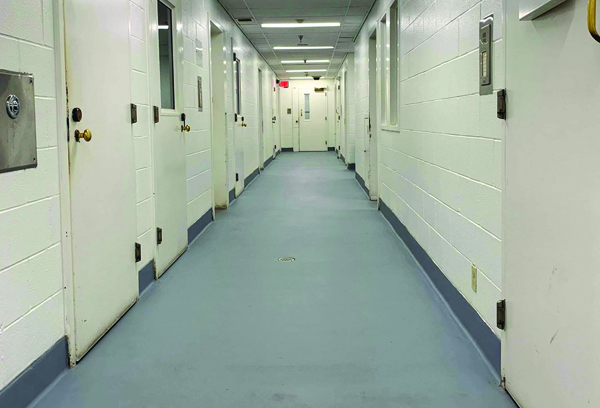The North Royalton City Council unanimously adopted an ordinance that will raise the charges for both annual and per diem rental of the City’s jail cells for 2023.
According to the ordinance, “the annual rate to be charged for 2023 be fixed at Sixty-Three Thousand Eight Hundred Seventy-Five Dollars ($63,875) per jail cell bed and that the per diem rate be fixed at Two Hundred Dollars ($200.00) per jail cell bed.” Currently, the City has the cities of Parma Heights, Broadview Heights, Brecksville and Berea under contract. Those contracts expire at the end of this year. The ordinance was introduced by Mayor Larry Antoskiewicz and co-sponsored by Council President Paul Marnecheck. Antoskiewicz said they introduced the ordinance at this time because he wanted to get the new rates in place for potential cities when they budget for 2023.
This is part of the City’s effort to make the jail more feasible, after an effort to close the jail several years ago. Since that time, Mayor Larry Antoskiewicz formed the special fact-finding commission to study the workings of the jail and provide the information to City Council. The five-person committee was tasked to “read, study and provide the information to Council,” said Antoskiewicz. There have been several updates since the committee’s inception. Since that time, the jail fees have been increased, as it did in March, when legislation was adopted that raised the daily use of the jail to $135 from $125. It also added a section for prisoners requiring administrative segregation at a cost of $270 per day. When asked why the City chose to raise the rate by $10 per day, Antoskiewicz responded, “you look at what other people are doing and stay within a range.”
The Jail Task Force has noted their observation that the jail is a very valuable asset to the city and is well maintained and managed. It has reduced expenses and has tried to produce revenue to close the gap between expenses and revenues. Task Force member, Matt Stuczynski, has said that “there seems to be capacity within the jail to accept more prisoners/occupants; however, pricing power and that, of course, means the fees that we charge prisoners/occupants, is a very complicated and highly sensitive model.” He noted that, “we see the strategy being conducted likely in two phases: Phase 1 – begin to immediately increase the fee, which Council already has sought to fulfill, to close the revenue gap by increasing revenues; and secondly to increase occupants within the facility by reaching out to neighboring communities, which you’ve already done. The key is to attract more, maintain what you have and continue to fine-tune that process.” That is what has been happening in the past two years.
Antoskiewicz said that in addition to the current cities under contract, he has also had interest from one other city. He hopes that the currently contracted cities will sign on for 2023, noting that those contracts help to take some of the financial burden off of the City. “It’s a start to letting other communities take on the responsibility of using our jail,” he said.
By GLORIA PLEVA KACIK
Contributing Writer






